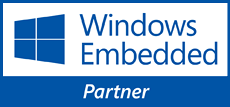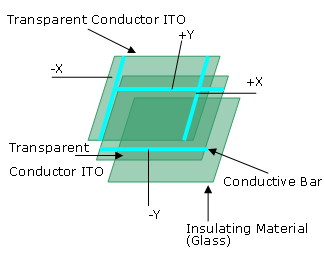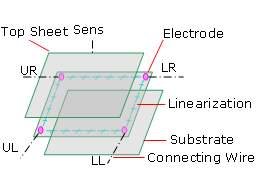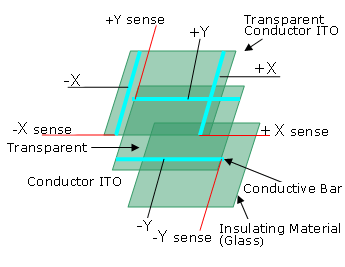The SAW touch screen uses acoustic waves that travel over the surface. It contains a substrate material (glass), 4 transducers, an array of reflectors and transducers attached to the beveled edge of the glass for the X and Y axis. ( 2 for transmitting and 2 for receiving ) The transmitting transducers are located at the horizontal and vertical edges. The receiving transducers are located at the opposite edges. When the user touches the screen, some of the energy is absorbed. The reduced energy is detected by the receiving tranducers and the X and Y coordinates are sent to the computer.
Benefits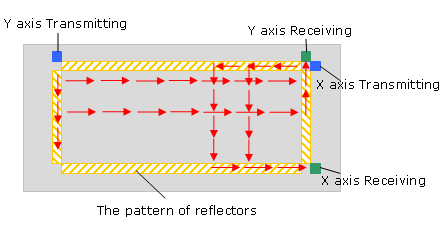
- High touch resolution
- Clarity
- High light transmission
- High impact resistance
| Touch Device | Result | Description |
| Finger | OK | |
| Fingernail | X | (It needs soft object) |
| Pen | X | (It needs soft object) |
| Gloves for Mechanics | X | (It needs soft object) |
| Medical Glove | OK | |
| Eraser | OK | (soft eraser) |
| Credit Card | X | (It needs soft object) |
| Soft Stylus | OK | |
| Special Capacitive Stylus | X | (It needs soft object) |
| Paper Clip | X | (It needs soft object) |
| Water Drop on the Touch | X | Around 10C.C. of water drop will cause ray infraction. |

